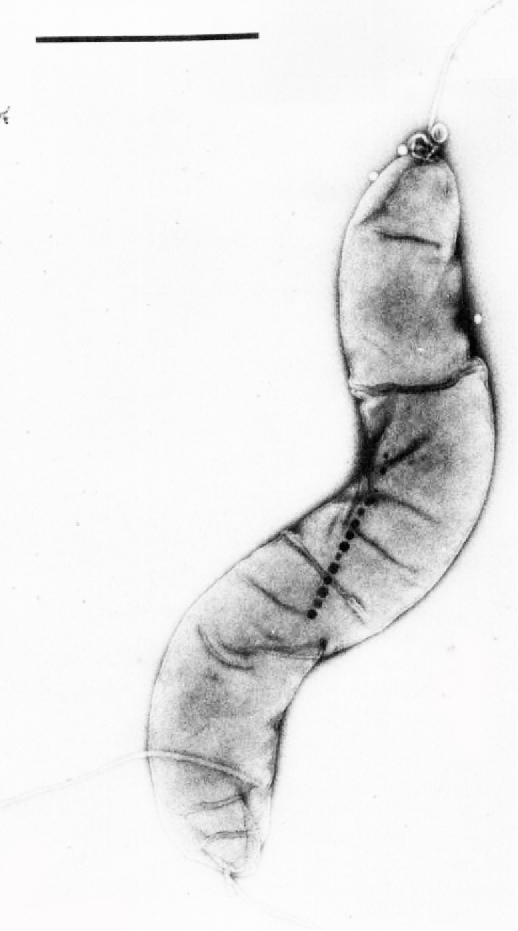|
Home / Anomalous_Items / Bacteria / Photosynthetic_Bacteria / Purple_Nonsulfur
|
|
|
|
Purple nonsulfur (PS Bacteria) |
|
|
|
Aquaspirillum magnetotactum isolated from marshes at Woods Hole, Massachusetts USA highlighting the chain of iron microchips responsive to geomagnetism helping the cell to migrate downward in a lake column. The cell also has a flagellum at each pole. Bar = 1 picometer. Photograph by Maratea and Blakemore (1981). Maratea, D. and R.P. Blakemore (1981). Aquaspirillum magnetotacticum sp. nov., a magnetic spirillum. International Journal of Systematic Bacteriology. 31 (4): 452–455.
|
|
Unidentified magnetotactic bacterium with chain of 12 magnetosomes (magnetite
nanochips) that sense and respond to geomagnetism as discovered by Professor
Richard Blakemore (1975), University of New Hampshire USA.
Blakemore, Richard (1975). "Magnetotactic bacteria". Science. 190 (4212): 377–379. Chen, L.,
D.A. Bazylinski and
B.H. Lower 2010. Bacteria that synthesize nano-sized
compasses to navigate using earth's geomagnetic field. Nature Education Knowledge 3(10):30 |
|
|
|
Large magnetobacterium 15
mm long with two chains, with a total
of ~ 180 magnetosomes (magnetic nanocrystals). Collected at a depth of 44 m in Ammersee, Germany.
Bar = 1 mm. Vali, H. and J.L. Kirschvink 1990. Observations of magnetosome organization, surface structure, and iron biomineralization of undescribed magnetic bacteria: Evolutionary speculations. In: Iron Biominerals (Ed. R.B. Frankel and R. P. Blakemore, Plenum Press, New York, 1990:97-115.
|
|
Another large magnetobacterium 8 mm long with five chains of bullet-shaped magnetosomes (total 1000 magnetosomes) also from Ammersee, Germany at a depth of 44 m. Bar = 0.5 mm.
|
|
|
|
|
|
Home / Anomalous_Items / Bacteria / Photosynthetic_Bacteria / Purple_Nonsulfur
|



